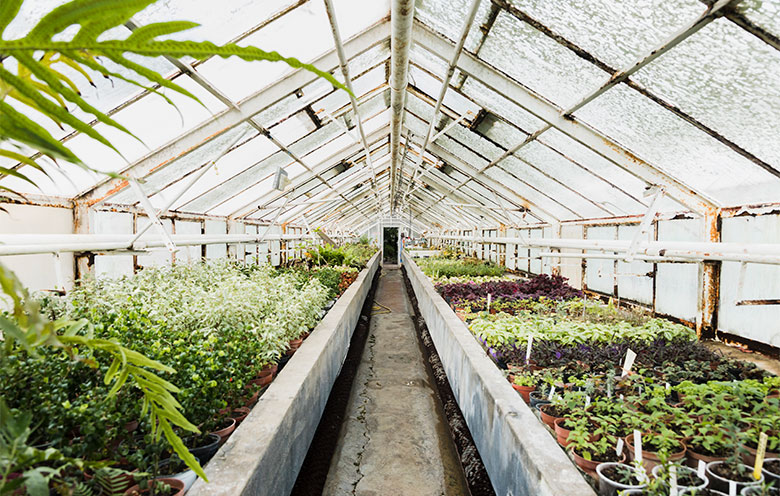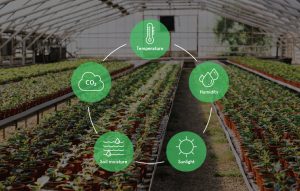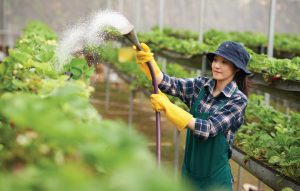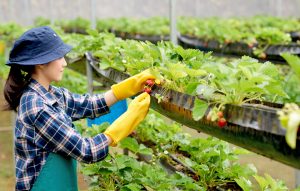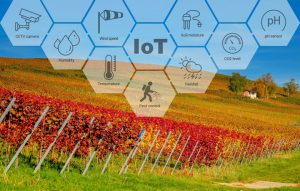The Internet of Things (IoT) is bringing countless benefits to the agricultural sector today. The use of sensors in monitoring is improving the quality and pace of the crop production processes. The agriculture industry has started adopting IoT to improve their process efficiency and many greenhouse growers have implemented it already.
Since greenhouses are built to provide controlled climatic conditions for optimum growth of plants, it becomes imperative to monitor and control all the parameters affecting the growth and yield of plants in a greenhouse. Therefore, growers face challenges in effectively, as well as accurately, calibrating factors such as light, temperature, nutrition, pest control and more. However, IoT-enabled monitoring systems and its sensors have taken greenhouse farming to another level.
A human eye might miss out on a deviation or fault, but if you have implemented a cloud-based smart greenhouse monitoring system, it will help you to monitor and control everything in your greenhouse minutely. This is because the system records data for different parameters and sends you alerts based on the predefined parameters.
Let’s go through a few details before installing a cloud-based monitoring system
1.What are the requirements to use a remote monitoring system?
To use a monitoring system, you will need:
i) An IoT platform
ii) An internet connection.
iii) An accessible electrical socket.
iv) A computer or laptop for the initial setup.
v) A mobile/laptop/tablet to access the dashboard of the monitoring system through a web or mobile application.
2.How can you determine what kind of monitoring system and sensors are required?
The support team of your service provider will assess your monitoring needs and suggest the products that would be required for your application. They can either visit your site or you can show it to them via video conferencing.
3.Is the monitoring system easy to set up or we need to hire a technician?
The monitoring system is easy to use and install. You can follow the given installation steps and install it yourself.
- Mount the device to a secure wall or surface
- Plug it into an electrical socket
- Plug in an internet connection
- Connect the sensors (the procedure is provided with the monitoring system)
Your service provider would offer you the installation services, or else you can also ask for a recommendation of a local representative in your locality who can set up your system. Also, your service provider would provide you with technical support via phone or email for your future queries, as and when needed.
4.Where is the data collected by sensors stored?
The incorporated sensors collect data from multiple sources and send them to the cloud via the IoTConnect platform. IoTConnect is our IoT platform that helps you to develop, deploy, and manage connected products without hassle. It helps businesses to leverage the existing as well as real-time data in visualizing the operations and making better decisions. Moreover, IoTConnect allows its users to set custom-made rules and trigger alarms or actions based on real-time data to automate otherwise manual operations.
5.How is the collected data analyzed?
IoTConnect platform allows you to store your IoT data into Microsoft Azure. Cloud storage enables organizations to easily aggregate telemetry data from multiple sensors, analyze the data and draw insights from them.
6.How do I get alerts after the collected data is analyzed?
IoTConnect platform sends you alerts on your computer system/laptop/tablet. You get access to a simple application dashboard through which you can monitor your greenhouse easily.
7.What types of sensors are useful in greenhouse monitoring?
Greenhouse sensors are commonly used for the following:
| S.No | Types of sensors that are useful in greenhouse | |||
|---|---|---|---|---|
| 1 | Moisture detection | Sensors placed in the soil, measure moisture content. | ||
| 2 | Equipment monitoring | Sensors placed on irrigation systems monitor the performance of pumps. | ||
| 3 | Access control | Sensors placed on entrance doors, windows, supply rooms and equipment sheds send alerts for any unauthorized entry into the greenhouse environment. | ||
| 4 | Power supply monitoring | Sensors placed on critical equipment like lighting, water wells, heater fans, louvers, sprinklers and humidifiers detect electric outages. | ||
| 5 | CO2 level | Sensors placed in greenhouse detect CO2 levels when they go above or below the preset values. | ||
| 6 | Air circulation monitoring | Sensors placed on automatic ventilation systems send alerts if these systems stop running or start operating outside preset parameters. | ||
| 7 | Water pH levels | Sensors tapped into plumbing test the pH level of water to prevent nutrient deficiencies that occur in, over or under-acidic water as it runs through the pipe. | ||
| 8 | Temperature | The temperature sensor is used to detect the temperature inside the greenhouse. | ||
| 9 | Humidity | The humidity sensor is used to detect the humidity value in the greenhouse. | ||
| 10 | Light sensor | The light sensor senses visible light range and displays digital values if natural lights are low. |
The final say
An IoT-based greenhouse monitoring system gives you easy access and control over your greenhouse ecosystem at anytime, anywhere with high speed and real-time data acquisitions. The monitoring application provides useful insights that help you to decide the plan of action for further optimization. All in all, implementing IoT-enabled monitoring system in a greenhouse can save time, cost and efforts while increasing productivity and ROI. To know more about greenhouse monitoring, please talk to our experts.


